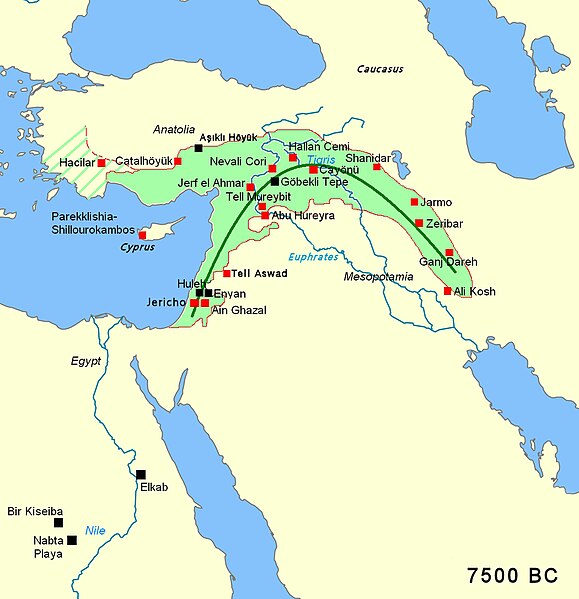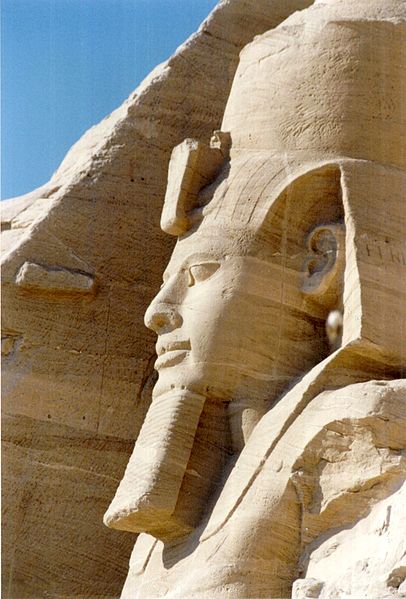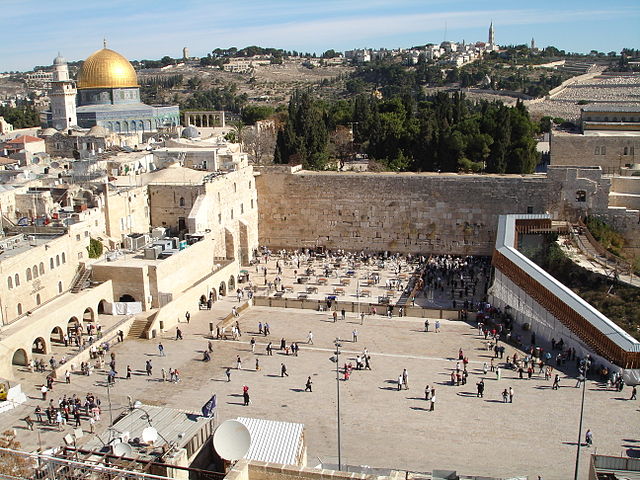History of the Middle East
The Middle East, also known as the Near East, is home to one of the Cradles of Civilization and has seen many of the world's oldest cultures and civilizations. The region's history started from the earliest human settlements and continues through several major pre- and post-Islamic Empires to today's nation-states of the Middle East.
Area of the fertile crescent, circa 7500 BC, with main sites of the Pre-Pottery Neolithic period. The area of Mesopotamia proper was not yet settled by humans.
Statue of Ramesses II of Egypt in Luxor.
Church of the Holy Sepulchre in Jerusalem: Jerusalem is generally considered the cradle of Christianity.
The interior of the former mosque of Córdoba, showing its distinctive arches.
The Middle East is a geopolitical region encompassing the Arabian Peninsula, the Levant, Turkey, Egypt, Iran, and Iraq. The term came into widespread usage as a replacement of the term Near East beginning in the early 20th century. The term "Middle East" has led to some confusion over its changing definitions, and being seen as too Eurocentric. The region includes the vast majority of the territories included in the closely associated definition of West Asia, but without the South Caucasus, and additionally includes all of Egypt and all of Turkey.
Some henges at Göbekli Tepe were erected as far back as 9600 BC, predating those of Stonehenge, England, by over seven millennia. The site of the oldest known religious structure created by humans.
Western Wall and Dome of the Rock in Jerusalem
Church of the Holy Sepulchre in Jerusalem
The Kaaba, located in Mecca, Saudi Arabia







